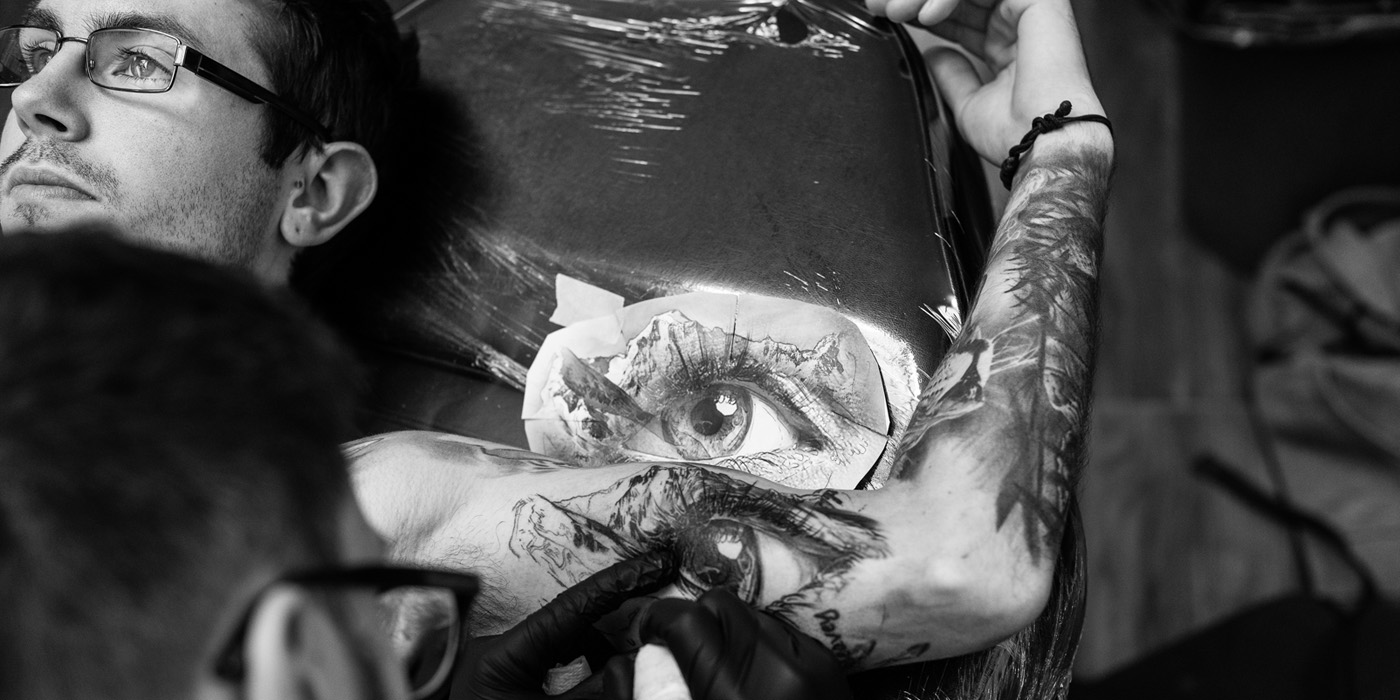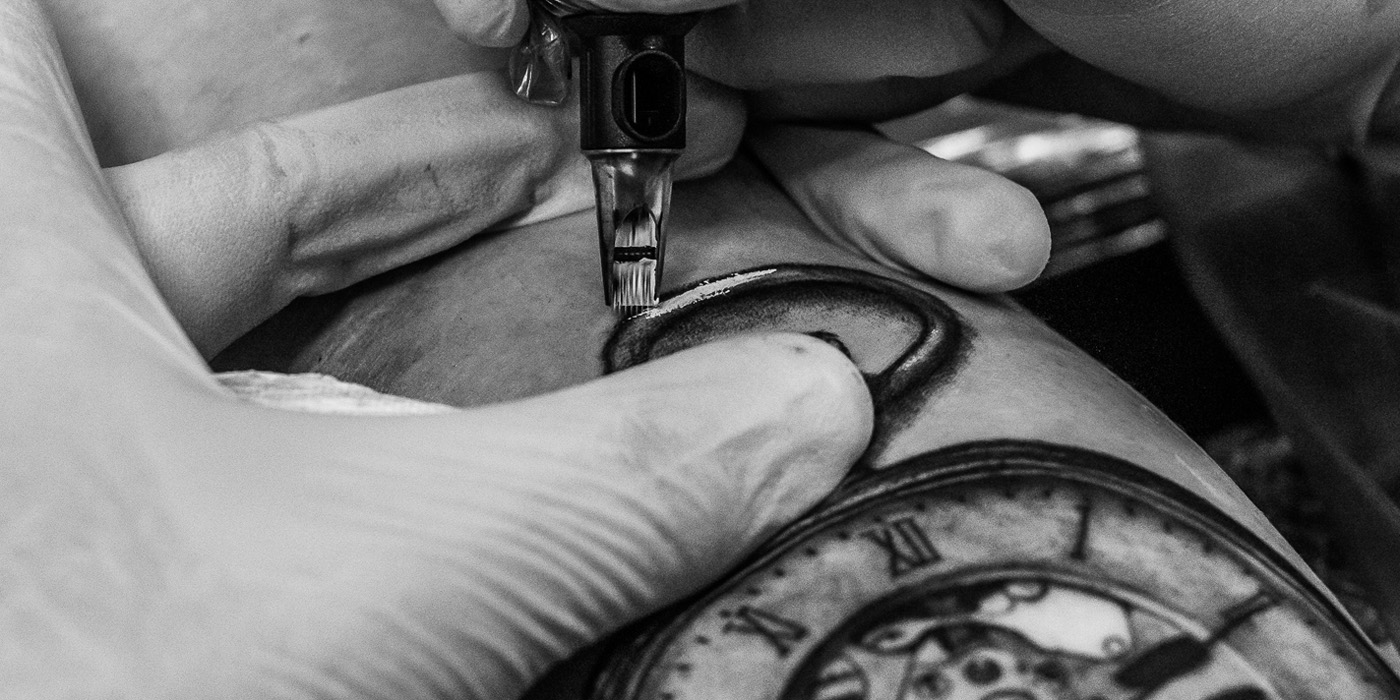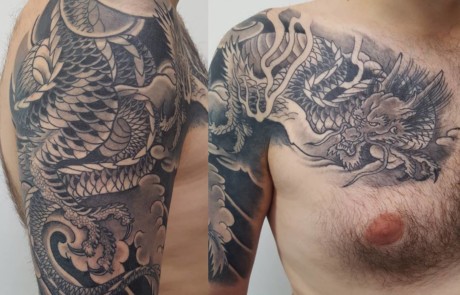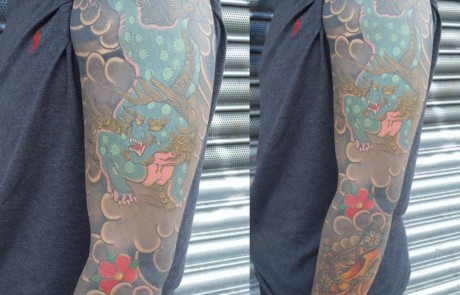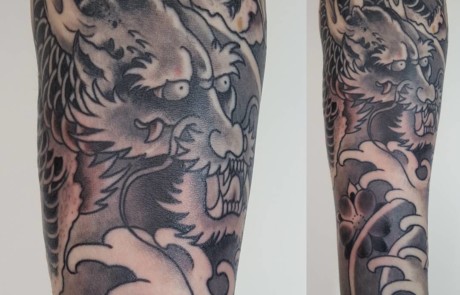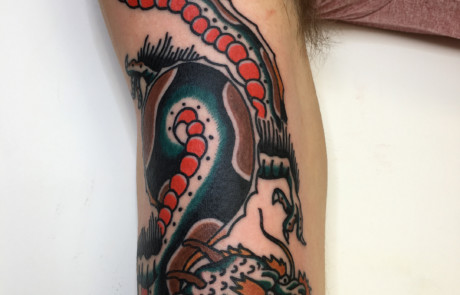Dragon Tattoos
Dragon tattoos have remained popular throughout the entire history of modern tattooing, but the past two decades in particular have inspired a fascinating explosion in creativity and variation. Dragons are one of the most striking creatures in popular storytelling, and for this reason tend to evoke a strong emotional response. Their history in lore is broad and profound, popping up in fantasy tales basically in every corner of the globe: from European myths such as St George slaying the ravenous beast; far eastern depictions of dragons as wise and generous; the Aztecs, who worshipped Quetzalcoatl, a feathered serpent; fearsome Vikings, who displayed dragon heads etched into their longboats; sea dragons in Ancient Greek sagas; to modern stories, such as Lord of the Rings and Harry Potter.
But what’s the reason for the popularity of dragon tattoos? In a nutshell, because they are always represented as powerful beings, and, most importantly, they are fiercely independent. Dragons tend to carry a message of danger that fits well with the conventional view of tattoos displaying a subversive attitude to life. They also symbolise defiance, especially the fire breathing kind. Dragon tattoos are hence perfect for boldly expressing personal autonomy. In terms of artistic form, dragons are ideal subject matter for highly-elaborate tattoos for a person looking to take the next step and get a major statement tattoo. The dragon’s elongated tail for instance allows for intricate tattoo pieces and can be shaped to accentuate the contours of the body. The dragon form also makes for impressive, grand scale pieces on the back, though these are reserved for the most skilled tattoo artists.
Dragons are appealing for tattoos not only in how complex their form is, but also crucially in the vast diversity of meanings ascribed to them. In Western culture, dragons are generally seen as villainous and demonic; hungry for their next fix of livestock or knights in armour. As such, Western fire breathing types represent anger, threat, greed, vengeance, courage, etc. People getting inked in this style likely don’t wish to exactly represent these all these views, but rather to evoke the rebellious image of these dragons; that they are uncompromising in life. And of course, they can just look damn cool.
Chinese dragon tattoos are also hugely popular. These actually go back thousands of years, as in Chinese culture dragons were celebrated for their wisdom and kindness, with many myths even giving them kudos for teaching humans how to read and write! Hence, they can symbolise integrity and righteousness in tattooing.
Tribal, or Celtic dragon tattoos are also very in demand. Tribal dragon designs can make for bold minimalist statements; say on the upper or lower arm. These are also perfect for more nuanced philosophical statements – In Celtic culture dragons were often pictured with their tail returning into their mouth, demonstrating the infinite cycle of life, and swirling knots in the body can be seen to represent the ups and downs in life.
Indeed, the crucial point about dragon tattoos is their openness to interpretation and the flexibility in artistic depictions of them. For many people getting inked in this style the appeal may not be to hone in on any one attribute, but to acknowledge the boundless variety of life.

